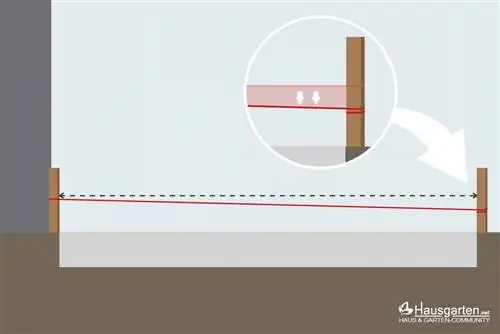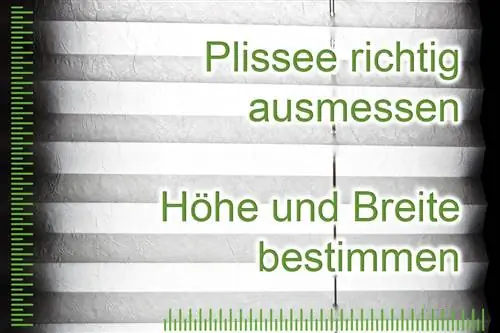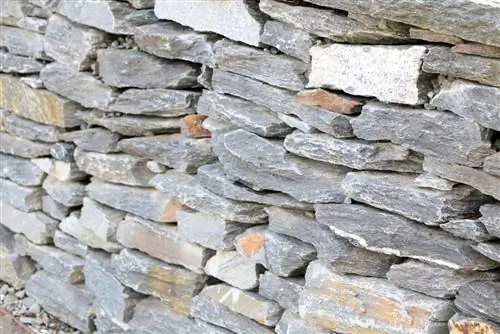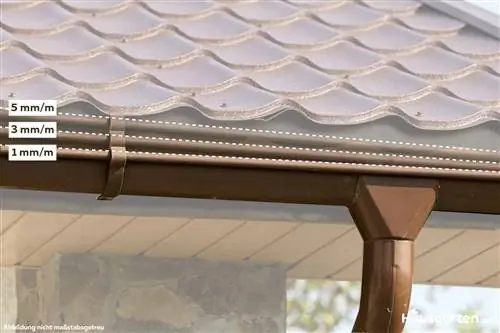- Author admin [email protected].
- Public 2023-12-17 03:39.
- Last modified 2025-01-24 12:45.
You don't need a math genius to determine the slope of a terrace. However, it is important that you work precisely when implementing it so that tables and chairs on the terrace are not crooked.
Determine slope mathematically
To calculate the slope of your terrace, you only need two known quantities:
- the length of the terrace
- the material of the terrace covering
The length of the terrace is necessary so that the gradient runs smoothly. The type of terrace covering determines the inclination, as this should vary depending on the covering.
Length of the terrace
So that rainwater does not flow into the house or apartment, it must flow towards the garden, i.e. away from the building. The gradient therefore slopes from the house wall to the garden. Therefore, the terrace length is usually the distance between the building and the garden border.
Material of the terrace covering
The differences between different materials in terms of slope are not big, but they can be crucial for drainage. Recommended for
- Concrete paving, fine stoneware or natural stone slabs 2.0 to 2.5 percent
- Natural stone paving 3 percent (due to the rough surface)
This information is to be understood as a guideline. Critics believe that effective water drainage is only possible with a gradient of 3.8 percent. However, since this leaves tables and chairs at an angle, this value is far too high. Therefore, the argument goes, a slope of 1.8 percent is sufficient.
The orientation of the slope also depends on the terrace covering. With wooden floorboards, water should be able to drain along the floorboards. Therefore the gradient should be aligned with these. If the terrace covering is grouted, the water runs off in the joints.
Calculate
If the length and the terrace surface are known, you can start calculating:
With a gradient of 2% you have to calculate two centimeters per meter (in length), with a gradient of 3% you have to calculate 3 cm etc
In other words, the slope per meter is the percentage in centimeters.
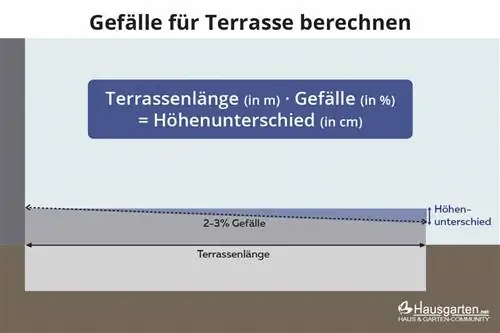
Tip:
You can get the same result if you multiply the length of the terrace by the value for the slope, such as 3 (=length of the terrace in meters) x 2 (slope in percent)=6 centimeters height difference.
Determine slope during construction
Once you have calculated the slope, the information must be put into practice. To do this you need:
- Wooden pegs or string nails
- suitable cords for tensioning
- Hammer for hammering in the wooden pegs / string nails
- Tape measure
- Pencil or crayon for marking
- Spirit level for aligning the cords
- if applicable Help bar
Once everything is prepared, follow the four-step instructions below:
1. Drive in stakes/nails
After aligning the slope, hammer in a stake at each opposite corner.
2. Set zero point
Then mark the zero point on a block. Then attach the rope at this height. Then transfer the zero point to the second peg. To do this, stretch the cord between the two pegs. It is important that the guide line is stretched horizontally. Therefore you should check this with the spirit level. If the result is satisfactory, you can attach the string to the second block and mark the spot.
Tip:
To tension the line horizontally, you can also determine the zero point using a terrace-length guide bar that you align with the spirit level.
3. Set gradient
Now take your calculated value in centimeters for the gradient. Now write your value on the peg that marks the starting point of your terrace. Then attach the string at the height of the marking. Make sure that the guide line is stretched taut. The result is an inclination of the line according to the previously calculated gradient.
4. Subtract slope
To pull off the slope, follow the taut guide line with a puller rod. This allows you to precisely level the slope.

